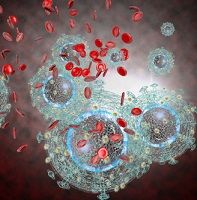Article
Database Can Spot New HIV Hotspots
Author(s):
Using a drug database British Columbia researchers can identify new HIV hotspots by looking at phylogenotypic clusters and watching for any sudden growth. It works to get new cases into treatment, but comes with ethical concerns.

Applying a monitoring system to the British Columbia drug treatment database—one that holds information of which HIV genotypes infect each of more than 9,000 residents with HIV—public health officers can learn when there are new outbreaks and take action.
Reporting in The Lancet Art FY Poon, PhD, of the BC Centre of Excellence in HIV/AIDS, Vancouver, BC, Canada, and colleagues said the key to getting quick public health response is making secondary use of the routinely collected HIV genotypes
HIV evolves rapidly so clusters of new infections with similar genetic sequences are likely linked. On average, five to six new HIV genotypes are added to the country’s database every day.
Those additions trigger an automated reanalysis of the entire database.
The system generates monthly reports on the growth of characteristics of clusters for distribution to public health officers.
In their study, the team extracted clusters of five or more individuals with short phylogenetic distances between their HIV sequences. They watched to see if the clusters grew.
One did. In June, 2014, the monitoring system detected 11 new cases in one cluster in a three-month period. Eight of the cases involved drug-resistance. The cluster was made up mostly of young men who have sex with men.
Public health workers followed up to ensure the new patients got access to care, and most started drug therapy. As a result, of 12 new cases found in this cluster, there was “reduction in the onward transmission of drug resistance.”
The approach “is cost-effective, attains near real-time monitoring of new cases, and can be implemented in all settings in which HIV genotyping is the standard of care,” Poon writes.
Responding to the article, Mark Gilbert of the Dalla Lana School of Public Health in the University of Toronto, Toronto, CN, and colleagues wrote that the approach is “powerful and promising” but comes with ethical considerations.
There is a potential for misuse of the data “in criminal cases of HIV non-disclosure” a concern that could result in individuals “withdrawing from valuable studies and treatment databases” or even from testing and treatment.
That could be an even larger privacy concern globally, as some societies stigmatize HIV, the team wrote.
Related Coverage:
Case History: When an HIV Epidemic Hit a ‘One-Stoplight Town’
Baby Boomers' Behavior Adds to HIV Risk
Study Finds Only Half of Patients on Antiretroviral Therapy Receive Recommended Regimens





